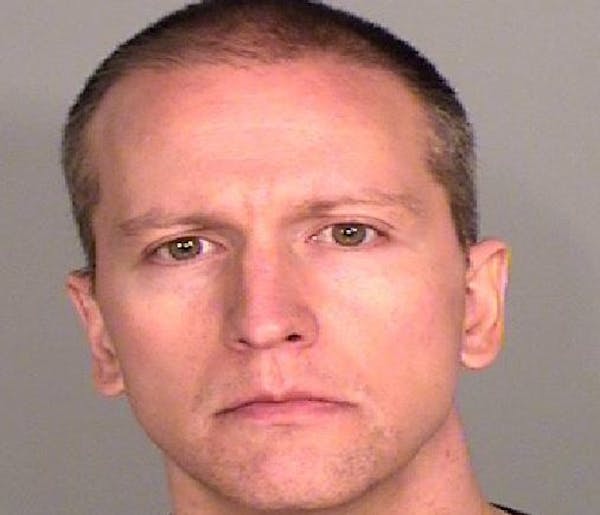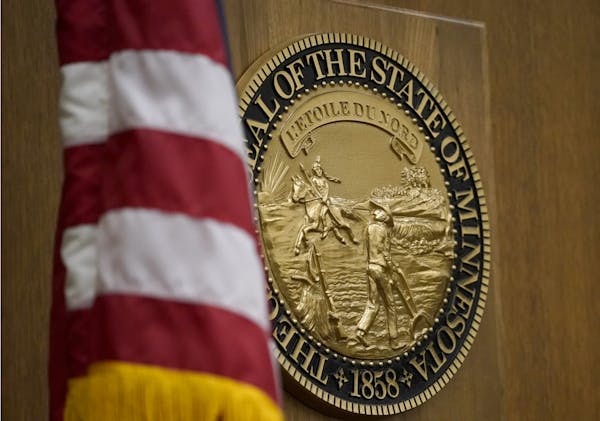Ten months after George Floyd died, prosecutors and the defense clashed Monday over fired Minneapolis police officer Derek Chauvin's role in the death, beginning a trial that stands to become a watershed moment in the nation's debate over policing and use of force against Black suspects.
Chauvin "betrayed this badge when he used excessive and unreasonable force" on Floyd, prosecutor Jerry Blackwell said, noting that Floyd was not armed or threatening to anyone.
On the first day of testimony in Chauvin's trial, jurors heard opening statements from both sides and listened to testimony from a 911 operator, gas station employee and sidewalk bystander who tried to intervene. They also saw several excruciating videos and images of the moments leading up to Floyd's death in police custody.
During his opening statement, Blackwell played the widely seen bystander video of Floyd's arrest, showing him prone on the street under Chauvin's knee, saying he couldn't breathe, calling for his mother, writhing and falling silent as an increasingly agitated group of onlookers yelled at Chauvin to "check his pulse."
Despite the pleas, Blackwell said Chauvin "does not let up, does not get up." The prosecutor wove variations of the phrase through his hourlong opening in which he said the officer had betrayed the badge and his duty to protect.
Defense attorney Eric Nelson followed, saying three officers struggled to control Floyd and urging jurors to use common sense and reason.
"You will learn that Derek Chauvin did exactly what he was trained to do over the course of his 19-year career," Nelson said during his 20-minute presentation. "The use of force is not attractive, but it is a necessary component to policing."
The trial began in the heavily fortified Hennepin County Government Center less than a year after Floyd's dying words "I can't breathe" became a rallying cry across the world in protests against excessive use of police force. President Joe Biden is closely watching the trial and getting regular updates from staff, said spokeswoman Jen Psaki. At the time of Floyd's death, Biden said the nation has an "open wound right now."
District Judge Peter Cahill started the day by swearing in 14 jurors, including two alternates, who had been selected over the past three weeks.
By the end of the day, jurors and anyone watching on the groundbreaking livestream had seen extensive footage of Floyd's final encounter that was captured on city surveillance cameras and multiple bystander cellphones. The snippets were played in real time and slowed down as witnesses described what they had seen.
The three witnesses who testified were the first to be seen via global livestream of a trial. The feed ran smoothly until the end of the business day when it cut out on most media outlets; Cahill sent the jury home with the admonition to not watch the news.
Chauvin is charged with second- and third-degree murder and manslaughter. He took notes on his yellow pad and stood silently once, having removed his paper mask, as the day's final witness, Donald Williams II, identified him as the person he had seen kneeling with what appeared to be increased pressure on Floyd's neck.
Last May, Williams happened upon the police scene while walking to Cup Foods on E. 38th St. and S. Chicago Av. The 33-year-old security professional, wrestler and mixed martial arts fighter can be heard on the bystander video pleading with Chauvin and three other officers to check Floyd's pulse and ease up. The other officers, J. Alexander Kueng, Thomas Lane and Tou Thao, are scheduled for trial in August on charges of aiding and abetting Chauvin.
Williams said Chauvin had Floyd pinned to the pavement in what he recognized as a "blood choke," which compresses arteries or veins in the neck. He said he called out to Chauvin, who made eye contact once and looked away. Williams compared watching Floyd gasp for air to a fish he had caught earlier that day with his son.
"You see Floyd fade away like the fish …" he said. "He vocalized that he can't breathe and 'I'm sorry.' His eyes rolled back in his head."
Then prosecutor Matthew Frank replayed a clip of bystander video, asking Williams to point out what he called a "shimmy," a repositioning by Chauvin to maintain or increase leverage on Floyd.
As Frank played the video, Williams pointed out Chauvin's knee or feet lifting and shifting, saying, "He just did it again. He just did it again."
Williams wasn't done testifying when the day ended. He will be back on the stand first thing Tuesday morning and then up for cross-examination by Nelson.
At the end of Monday's session with the jury out the room, Cahill gently advised the charismatic and talkative Williams to stick to his observations without offering conclusions or opinions.
The state's first witness of the trial was the 911 dispatcher who handled the call that resulted in Chauvin and the other officers responding to the intersection where Floyd was detained.
Under questioning from Frank, Jena Scurry described how she was troubled by seeing on wall-mounted dispatch screens how Floyd's arrest played out on city surveillance cameras. The seven-year dispatch veteran said she was surprised at how long Floyd was on the pavement. "I first asked if the screens were frozen," Scurry testified.
At one point she described a "gut instinct" that "something was not right." Her call to the shift sergeant was played in court.
"I don't know, you can call me a snitch if you want to but we have the cameras up for [squad] 320's call, and … I don't know if they had to use force or not, but they got something out of the back of the squad, and all of them sat on this man, so I don't know if they needed you or not, but they haven't said anything to me yet," the dispatcher is heard saying, using the call sign of the squad driven by Lane and Kueng, the first on the scene.
The sergeant responded: "Yeah, they haven't said anything yet ... just a takedown, which doesn't count, but I'll find out."
Under cross-examination by Nelson, Scurry acknowledged that she could not hear what was happening at the intersection and does not have the same training as a police officer. She also agreed with the defense attorney that she was unsure at the time that she was viewing a use-of-force incident.
The other witness Monday was 23-year-old Alisha Oyler, who last May was working at the Speedway station across the street from Cup Foods and who captured part of the incident on her cellphone camera.
Oyler was a soft-spoken and reluctant witness even under questioning from prosecutor Steve Schleicher.
But during her testimony, prosecutors played the entirety of the incident as it had been captured on city cameras from behind — as opposed to the bystander video that captured the front view.
Her cellphone videos were shown side by side when they matched with the city video as Schleicher walked her through them. In some of the shots, she could be heard saying, stuff "was going down." She said she shot video because police are "messing with people and it's not right."
At the end of the video, an ambulance had pulled up and Schleicher pointed out that despite the gurney behind him, Chauvin had not changed position and was still kneeling on Floyd.
That was a return to one of Blackwell's points from his opening in which he explained how Minneapolis officers take an oath to respect the sanctity of life, to not use excessive force and to accept the public trust that comes with the badge they wear.
Ultimately, Blackwell said, the state will prove that Chauvin's conduct was a "substantial cause" of Floyd's death and inflicted "without regard for Mr. Floyd's life."
He said Floyd didn't die instantly, like one does of cardiac arrest, or nod off, as in an opioid overdose.
Opioid overdose victims, he said, are "not screaming for their lives, they're not calling for their mothers, they're not saying 'Please, please, I can't breathe.' That's not what [an] opioid overdose looks like."
But Nelson told the jurors there are always two sides to a story and that there were no signs from the autopsy that Floyd was asphyxiated or that his airflow was restricted. Tests revealed fentanyl and methamphetamine in his system.
The autopsy by Hennepin County Medical Examiner Dr. Andrew Baker also revealed "many other issues," he said, including coronary disease, an enlarged heart and swelling of the lungs.
Nelson then referred to Floyd using counterfeit money to buy cigarettes in a store, resisting arrest and ingesting drugs to conceal them from police. He noted the difference in size between Floyd and Chauvin, saying Floyd was taller and heavier than Chauvin.
He noted the volatility of the situation in a high-crime area, and the increasingly agitated bystanders creating "a threat that was growing in front of them."
Nelson told jurors to use common sense and look at the "totality of the circumstances" outside Cup Foods that day.

Trail section at one of Minnesota's most iconic spots closing for rehab

Will 'shotgun only' zone for deer in southern Minnesota be abolished?

Four Minnesotans catch salmonella in outbreak linked to basil sold at Trader Joe's


